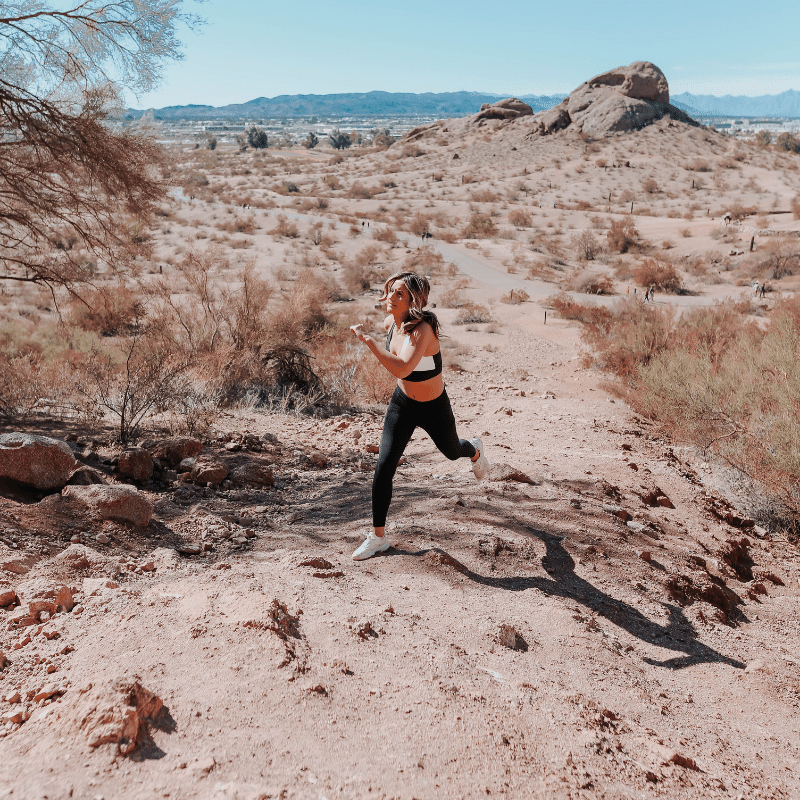There’s a lot of focus on foods we should be avoiding, which often overshadows nutrients or foods we need to focus on adding to our diet. Iron is an example of a nutrient that is sometimes forgotten about. But for certain populations — young women in particular — iron deficiency can be a common cause of fatigue and reduced athletic performance. Recent data indicates that 10 percent of women under 50 have iron deficiency. That number may be as high as 30 percent among female athletes.
Iron helps transport oxygen throughout the body and is important for growth, hormone synthesis, and many other important bodily functions. One of the biggest signs of iron deficiency is fatigue, but unusually pale skin and bruising can be other signs. If you think you might be deficient, ask your doctor to check your blood levels.
How much iron do you need?
The amount you need varies by gender, activity level, and stage of life. For example, menstruating women need more than twice as much as men. Athletes and pregnant people also have higher needs — more than three times that of men.
Recommendations for daily iron intake
| Life stage | Iron recommendation |
| Adult men 19–50 years | 8 mg |
| Adult women 19–50 years | 18 mg |
| Adults 51 years and older | 8 mg |
| Pregnant women | 27 mg |
Where do I get iron?
There are two different types of iron: heme and non-heme iron. Heme iron is found in animal foods such as meat, poultry, and fish. Non-heme iron is found in plant foods as well as foods fortified with iron. Because non-heme iron is not absorbed as well as the kind found in animal foods, vegetarians and vegans need to eat 1.8 times the amount of iron of someone who eats meat.
Here are some of the best sources of iron:
Animal sources of iron
- Oysters
- Beef, especially beef liver
- Sardines
- Chicken
- Tuna
- Turkey
Plant sources of iron
- Breakfast cereals fortified with iron
- White beans
- Lentils
- Tofu
- Spinach
- Potato
Can vegetarians and vegans get enough iron?
If you follow a plant-based diet, you absolutely can meet your iron needs with some planning. The best way to do so is to eat a wide variety of foods and pair iron-rich foods with foods that contain vitamin C, as vitamin C can enhance your iron absorption. Some food groups to focus on include:
- Grains: Fortified breakfast cereals are one of the best sources, but oatmeal, rice and bread can contribute some as well.
- Beans and lentils. White beans, chickpeas, and lentils are two of the best options with 2-4mg per half cup, but all beans contain some iron so choose the ones you enjoy!
- Green vegetables: Spinach, kale, and other dark leafy greens are a good source of iron. Broccoli and Brussels sprouts can also contribute to your needs.
- Nuts and seeds: Chia seeds are a particularly good source with 2mg per ounce, but most nuts and seeds can contribute a small amount of iron to your diet.
- Chocolate (because isn’t chocolate its own food group?): One ounce of dark chocolate has 2mg of iron, so don’t be afraid to treat yourself daily!
BeBOLD bars are a source of iron
BeBOLD bars are a source of iron as well. The chocolate chip almond bar, for example, has 1.8 mg of iron (10% of the daily value). Several of the ingredients contain iron including oats, nuts and chocolate. When it comes to meeting your iron requirements, every bit counts!
Jinan Banna, PhD, RD is the founder of Jinan Banna LLC and an Associate Professor of Nutrition at the University of Hawaii. Her research interest is in obesity prevention. Jinan helps working women to lose weight so that they can feel confident and energetic by offering free information on her blog, as well as nutrition coaching.

